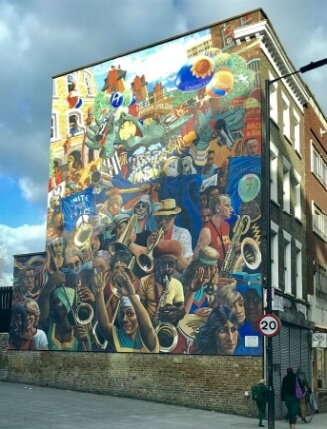What is Multicultural London English (MLE)?
If you’re a Londoner, or even if you’re not, have you noticed the way a lot of young Londoners speak, particularly in places like Hackney or Lewisham or other inner-city areas? Have you ever thought about the kind of dialect that people like Dizzee Rascal, Stormzy or Big Shaq use in their music? This is a kind of English that linguists have called Multicultural London English, or MLE for short. Sometimes MLE goes by the name ‘Jafaican’, at least in the media. Why ‘Jafaican’? We’ll come back to that!
What is MLE like?

MLE is a dialect of London English which has emerged since the early 1980s in parts of London where there has been a relatively high level of immigration. MLE is based on the traditional East End Cockney dialect, but it has a number of different sounds and grammatical constructions.
For instance, unlike Cockney, MLE speakers pronounce their aitches at the beginning of words, as in house, instead of Cockney ‘ouse. You might also notice the vowel sounds in the words like home, where the ‘o’ is rather like a Scottish or a Newcastle vowel, or the vowel in a word like face, which also sounds as if it comes from Scotland or Newcastle.
You may have heard the expression: I was like in expressions like ‘I was like, that was great’. In fact, you may well use it yourself. But in MLE, people also say This is me, as in ‘This is me, "let’s get out of here"’.
You’ve probably also heard grime artists using the word man in a new way, as in Big Shaq’s ‘Man’s Not Hot’. This is a new pronoun, and it means the same as ‘I’.
And you’ll come across mandem, which refers to men or boys, or your (male) friends, as well as gyaldem, meaning ‘girls’ or ‘women’. MLE also contains a good deal of slang, like fam, ends or blood.
Where did MLE come from?

The first major group of post-Second World War immigrants to London came from the West Indies (the Caribbean) in the period from 1948 to around the mid-70s. This is the ‘Windrush Generation’, named after the SS Empire Windrush, the ship that brought the first Jamaicans who were invited to come and work in Britain after the war. They brought their language - Jamaican Creole or ‘Patois’ - and this sowed the seed that, 40 years later, would become MLE.
But relatively few of the features of MLE can be proved to be Jamaican - it’s mainly the slang that reveals any Jamaican ancestry. MLE certainly isn’t ‘fake Jamaican’ as the name ‘Jafaican’ suggests: it’s home-grown.
MLE has many other ancestors, too. This is obvious if you consider the very large number of other languages that immigrants brought with them, ranging from Punjabi, Bengali and Tamil to Yoruba, Akan, Arabic and Turkish - and many more besides. Researchers have counted over 300 languages spoken in London.
Many of the people who spoke these languages learnt English after they arrived, and like almost all adult learners they spoke it with a ‘foreign’ accent. This foreign accent formed part of the linguistic melting pot that made up the input to MLE.
Remarkably, though, it’s virtually impossible to say that a particular feature - a sound or a bit of grammar - comes directly from this or that language.
